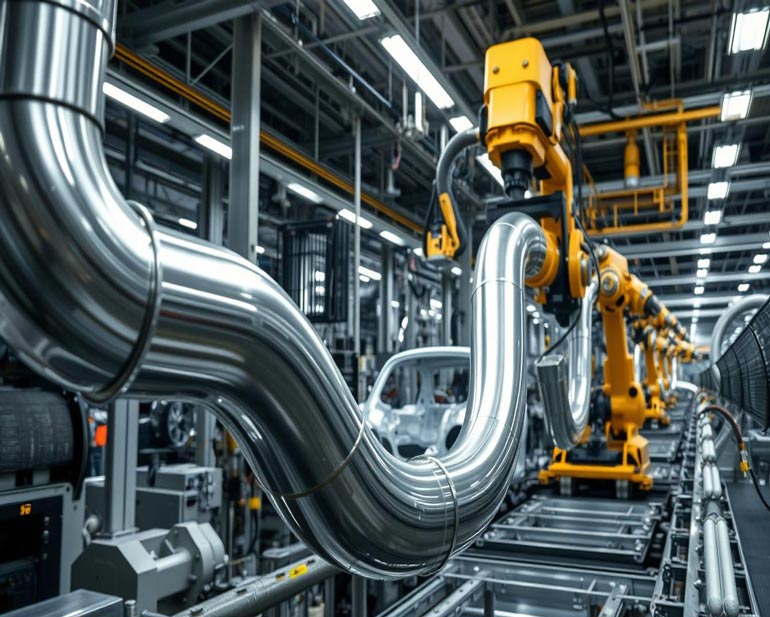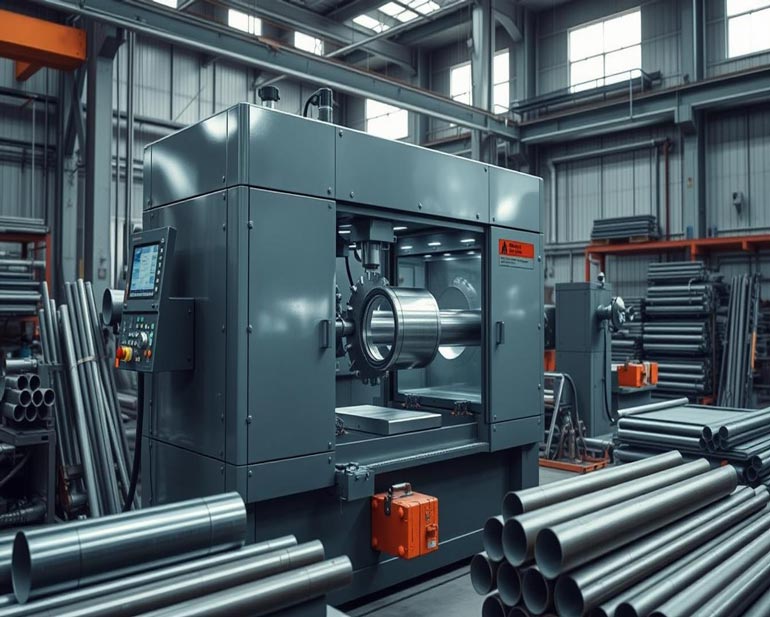Welcome to Mingzheng Precision Machinery
What Is The Difference Between A Pipe Bender And A Tube Bender?
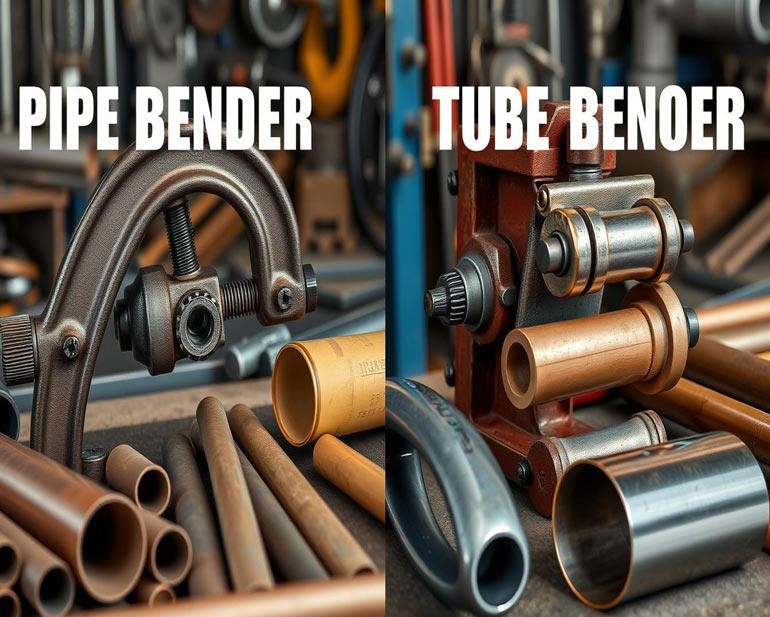
25 Apr
Discover the key differences between a pipe bender and a tube bender, their unique functions, and applications in various industries.
What is the difference between a pipe bender and a tube bender?
Do you know if your workshop uses the right tools? It's tricky knowing the difference between a pipe bender and a tube bender. They seem similar, but they are not the same. Choosing the right one is key for your work's precision and integrity.
Pipe benders are designed for the tough job of bending pipes. Pipes have thicker walls and need tools that can handle stress. On the other hand, a tube bender works well with lighter, various shaped materials. It's great for when you need precision with lighter materials1.
We see that both tools can work on pipes and tubes. Yet, they need special tooling for each job. The Pines Ultimate Tube Bender can bend big steel tubes effortlessly2. For smaller pipes, a pipe bender offers the precision needed for different tasks1. Let's explore how these tools differ in detail.
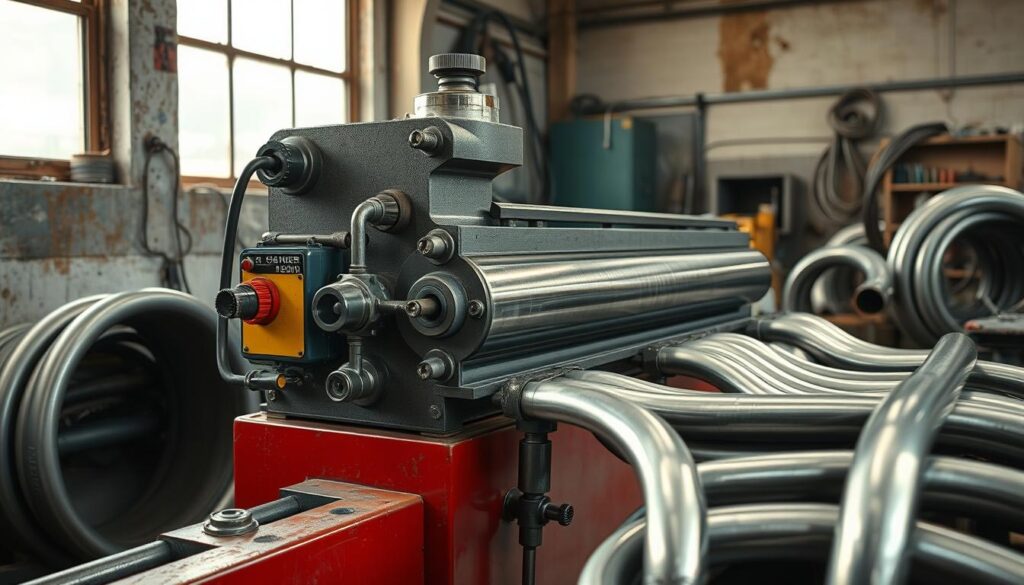
Understanding the Basics of Pipe and Tube Bending
If you're new to manufacturing and construction, knowing the difference between pipe and tube bending is key. These processes are unique, used for various projects. Pipe bending fits large infrastructure projects well, using heavy-duty gear for thick, large pipes. Tube bending, however, is for precise tasks in automotive or aerospace industries, where machines can craft complex shapes.
Choosing pipe or tube bending equipment depends on the method, material, and purpose. For big structures in industrial settings, metal pipes are great due to their toughness3. Metal tubes, on the other hand, work best for detailed work in architecture as they shape easily without extra parts3.
Different equipment for pipe and tube bending can affect your project’s cost and outcome. The rotary draw bending method is flexible, good for both pipes and tubes for tight bends4. For broader curves, roll bending is better, often used in building arcs4.
Every bending method follows rules about the pipe or tube’s size, thickness, and material. Thickness is key in deciding how tight a bend can be. It's important to prevent the materials from failing under stress. Seamless tubes are stronger under pressure than welded ones by 20%4.
Working with a bending expert is vital to make your manufacturing better. They help pick the right bending method and equipment. This ensures top results while saving money and boosting efficiency3.
| Bending Method | Applies Best To | Typical Use Cases |
| Rotary Draw Bending | Pipes and Tubes | Precision applications like automotive parts4 |
| Roll Bending | Pipes | Large radii constructions like archways4 |
| Ram Bending | Tubes | Cost-effective projects requiring simple bends4 |
| Compression Bending | Tubes | Applications not requiring tight radii4 |
Choosing between tube or pipe bending machines matters a lot. Knowing the methods and materials leads to smarter choices and better projects. As techniques evolve, experts must grow their skills in pipe versus tube bending to stay ahead.
Key Distinctions in Pipe Bending vs Tube Bending
In the world of bending, knowing the differences between pipe and tube bending is key. We'll look at important stuff like material design, wall thickness, and shape flexibility.
Material and Design Considerations
The design of the material affects pipe and tube bending a lot. Pipes are usually for moving fluids and are measured by their inside diameter. Tubes are measured by their outside diameter. This difference explains why tube bending needs special tools compared to pipe bending5.
Tubes can be shapes like ovals or squares. This requires tools like mandrel devices to keep the tube's shape while bending6. Pipes, being mostly cylindrical, use simpler bending methods. They can be made of steel, aluminum, and plastics5.
Wall Thickness and Stress Handling
Pipes and tubes differ in wall thickness, affecting how they handle stress when bent. Pipes have thicker walls. This means they need strong equipment for bending without harm5. Tube bending tools are usually lighter because tubes have thinner walls5.
Adapting to Different Shapes and Sizes
Every project has different needs for shape and size. Tubes can be made into many shapes to meet these needs. Tools like bending dies help make sure the bending is accurate and matches the project's specs6.
Understanding how to adapt to different sizes is important. For thick-walled pipes, bigger steel types are used. But, tubes need precise tools for the right angles without damage5.
What is the Difference Between a Pipe Bender and a Tube Bender?
What makes pipe benders different from tube benders? This question is key for pros who need the right tools for jobs in auto or building projects.
Pipe and tube benders both shape metal for the bends we want. They differ in whether they handle thick pipes or slender tubes. Tube benders are especially good at keeping the tube's shape right, which is key for things like car exhausts7.
Different jobs might need pipe benders or tube benders. For example, building and HVAC use pipe benders for tough jobs. On the other hand, making furniture often requires tube benders for their fine work without harming the material7.
New tech has made benders better, with digital controls and automatic feedback. This helps both pipe and tube benders work with greater precision and faster, fitting the push for new tech in the field7. Changing from manual to electric or hydraulic benders depends on the job needs7.
Keeping benders in great shape to avoid breaks and make them last longer is important. They are big investments for companies7.
Staying safe is always important. Following safety rules helps prevent accidents and get good results. This means picking the right bender for the task7.
Talking about which brands or types of benders work best is common among pros. They're interested in what makes some benders better for certain bends8.
Choosing between a pipe or tube bender depends on the project details. The right equipment affects how well and safely a job gets done, whether making roll cages or delicate furniture8.
Knowing the differences between pipe and tube benders helps pros pick the best tools. This understanding improves their work's speed and quality. Being informed about these differences is vital for anyone in this field.
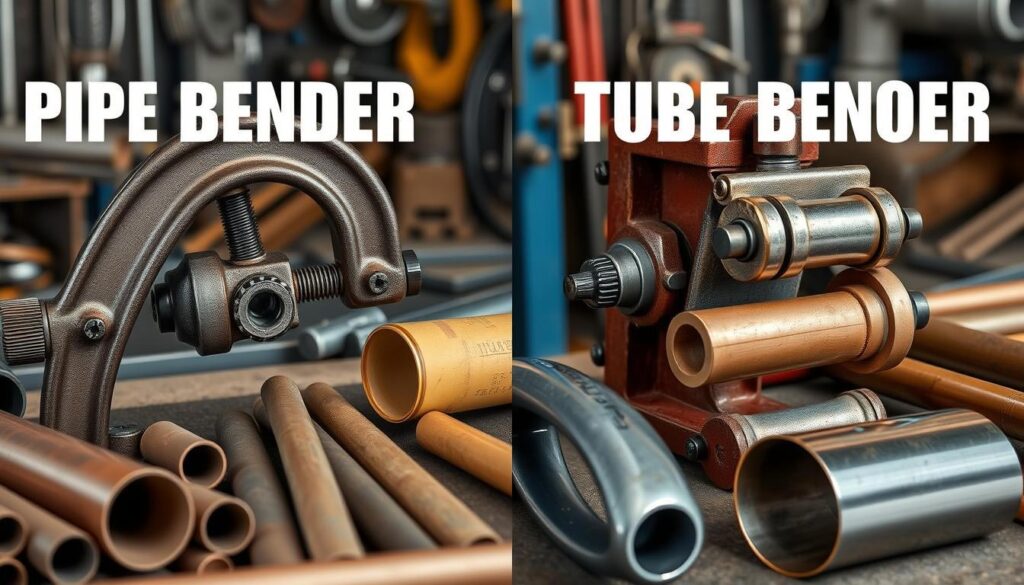
Diving Into the Tube Bending Process
Let's start by exploring the tube bending process. Many methods and machines are used based on what's needed for the job. They consider the project's details and the material9.
The Role of the Hydraulic Tube Bender
Hydraulic tube benders are vital in tube bending. They excellently handle big, precise bending jobs. They use hydraulic pressure to make each bend accurate. Industries like automotive and construction rely on this technology. They use it for making bends in strong metals like stainless steel and aluminum10.
Manual vs. Automated Bending Equipment
The choice between manual and automated bending tools depends on different things. These include how many bends are needed, their complexity, and the project's budget. Manual benders are cheaper and simpler but might not be as accurate as automated ones. CNC machines, a type of automated bender, are becoming more popular. They make very exact bends over and over, which is great for complex projects11.
Choosing the Appropriate Tube Bending Machine
When picking a tube bending machine, consider the material and the type of bend needed. Also, think about what the project overall requires. Machines like the Baileigh hydraulic bender can work with many materials and bend types. This includes roll bending and compression bending. They are versatile10. Keeping these machines in good shape is important. It helps them last longer and work better9.
In conclusion, picking a tube bending machine, manual, hydraulic, or automated, involves several factors. Think about the material, the precision needed, and how much it will be used. All these affect the quality of the bends for industrial uses. Knowing these can help manufacturers keep their machines working well for a long time.
Exploring Pipe Bending Equipment and Techniques
Learning how to bend pipes blends knowledge and skill. This uses special gear and methods to get the right shape. Rotary Draw Bending is a top choice because it's very accurate and doesn't cost too much1213.
Press Bending is cheaper, but not as precise or quick. It's not the best for very exact work12. On the other hand, Mandrel Bending keeps pipes perfect, even in tight bends. It's fast and precise, with no risk of the pipe crushing12.
Looking closer at pipe bending gear, we see big differences in how they work:
● Heating the tube in Hot tube bending makes it easy to shape by softening it13.
● Cold tube bending keeps the shape perfect without heat13.
● Hydraulic tube benders use pressure to bend thick pipes13.
| Technique | Advantages | Disadvantages | Suitable for |
| Rotary Draw Bending | Precision, repeatability, cost-effectiveness | Limited to predefined bending radii | Complex and multiple bends |
| Press Bending | Cost-effective | Poor accuracy, slow production | Simple bends, thin pipes |
| Mandrel Bending | Prevents tube collapse, accurate bends | Higher equipment cost | Tight radii in thick-walled tubes |
| Hydraulic Tube Bender | Powerful, can handle thick materials | Higher operational costs | Hard and thick pipes |
Choosing the right equipment and methods is key for any pipe project. We focus on giving you tools that are precise, repeatable, and affordable. This way, we make sure our solutions fit what you need well1213.
Comparative Analysis: Hydraulic Systems in Pipe and Tube Benders
In our mission to make things better, we look closely at tube and pipe benders. The heart of the matter is hydraulic systems. They play a huge role in bending big tubes and pipes. Knowing all about these systems makes things work better and last longer.
Operation and Efficiency
Tube and pipe benders are different, especially their hydraulic systems. CNC benders, used for tubes, are quite advanced. They've been getting better since 199814. Electric tube benders can do the job 30% faster than hydraulic ones if problems are fixed14. Plus, setting up electric benders for new tasks takes just 30 minutes. This means less waiting and more doing14.
Tools and Dies Specifics
Choosing the right tools and dies is key for bending. Different bends need different dies, like those for rotary draw bending or mandrel bending. These are crucial for smooth curves without hurting the metal14. Switching to servo-driven options can give better bend quality and more consistent results14.
Hydraulic vs. Manual Bending Tools
Hydraulic benders are top choice for big, consistent jobs. Manual benders are better for less frequent, simpler tasks. Hydraulic systems are tough and reliable for heavy use15. They're safe too, with features like fences and stop buttons, following CE safety rules14. Manual tools, however, are great for unique projects since they allow more control.
When choosing between hydraulic and manual benders, think about the job's needs and size. We aim to make bender operations better and more green. This helps everyone move toward smarter, more eco-friendly making.
Applications and Practical Advice on Bending Machines
Manufacturing requires bending different materials precisely. The right equipment is key for good results, whether it's metals or plastics. We'll look at how these machines are used, how to manage materials, and tips for saving costs.
Handling Different Materials: Metals and Plastics
Bending machines now work with metals and plastics thanks to tech advances. Bending heavy stuff like steel or softer ones like PVC needs careful methods. This avoids damage and makes sure shapes are right. For metals, using a mandrel can help prevent folds if bending tight16.
Oval, Square, and Circular Bending Possibilities
Today's machines can bend into oval, square, and circular shapes. This is great for car making and other fields needing different shapes. Some methods even bend up to 180 degrees. This shows how flexible these machines can be16.
Tips for Cost-Effective Bending Solutions
For cheaper bending, know your machine well and use it right. Pick the right machine, look after your tools, and teach your workers. Adding cameras and digital systems helps a lot. It makes bending accurate and cuts waste and delays17.
| Material Type | Bending Technique | Considerations |
| Metals (e.g., steel, copper) | Rotary draw bending | Needs inside help for tight curves16 |
| Plastics (e.g., PVC) | Heat bending | Keeping the right temperature stops warping |
| Mixed Materials | CNC bending | Automated for top accuracy and repeatability17 |
Bending machines are getting more automated and versatile. CNC machines are becoming popular, especially in Germany. In the U.S. and Canada, simpler machines are still in demand for their low cost. Understanding these trends helps businesses deal with bending tasks better. With smart strategies, bending metals and plastics can meet high standards of quality and efficiency, pushing the industry ahead.
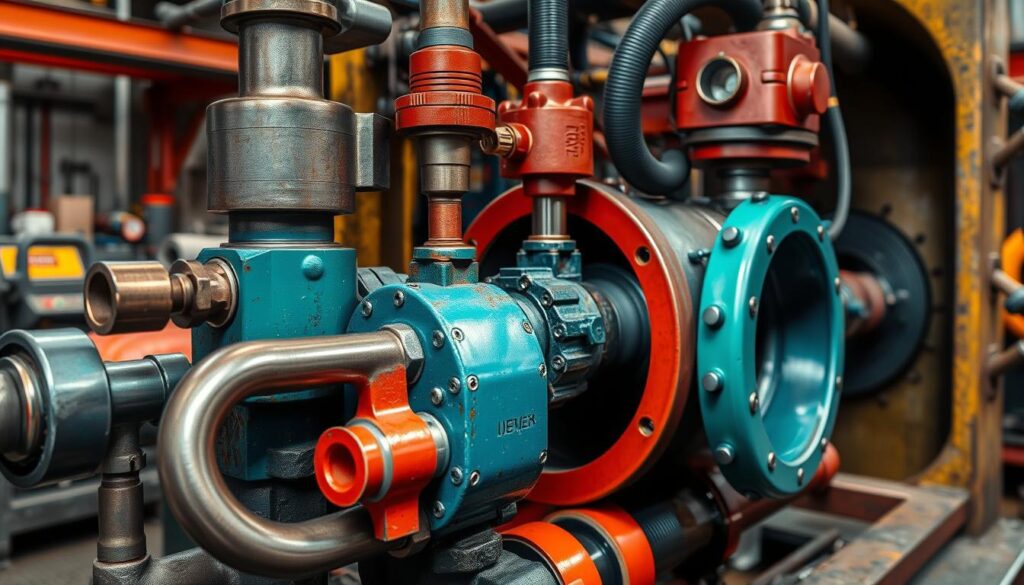
Conclusion
In comparing pipe and tube benders, both serve unique needs. Pipes carry fluids and have thick walls. They work well with hydraulic benders for big pipes in places like factories18. On the other hand, tubes are for structures and need to be light. CNC tube benders are great for them. They made bending accurate in car and airplane making1819. Knowing the difference between these benders is key. It makes sure your project is done right.
Choosing the correct bending method is important. It should fit the speed, accuracy, and material you're using20. For small and cheap projects, manual benders are good. But they might not be as precise as hydraulic ones. More advanced techniques like mandrel bending and heat induction offer more precision. They protect the tubes better but cost more. Your project's needs and your budget should guide your choice19.
Keeping your bending tools well-maintained is vital. It avoids sudden failures and keeps productivity high18. Choosing the right bender, while balancing your needs, is important for success. By carefully making these decisions, you can achieve true craftsmanship. This also aligns with Mekalite's aim to provide top-quality manufacturing solutions.
FAQ
What is the difference between a pipe bender and a tube bender?
A pipe bender works with thicker wall materials. It bends pipes by their inner diameter. Tube benders shape materials that might be oval or square. They bend tubes by their outside diameter. Each type needs its own tools and techniques for effective bending.
What basic understanding is essential for pipe and tube bending?
Knowing the difference between pipes and tubes is key. Pipes carry fluids and are usually round. Tubes can be of various shapes and are engineered for specific tasks. Choosing between pipe and tube bending depends on what your project needs.
How do material design and wall thickness affect bending?
The design and thickness of a material impact how it's bent. Pipes, being thicker, are good for wider bends. Tubes are often thinner and need careful handling to keep their shape during bending.
What is the role of hydraulic tube benders in the bending process?
Hydraulic tube benders are important for tight and precise bends. They use hydraulic pressure to bend tubes accurately. This makes bending easier on the person doing the work. They're great for complex or precise shapes.
When should you choose manual bending equipment over automated ones?
It depends on the project's size, need for precision, and budget. Manual benders are good for small or detailed projects. Automated benders are better for big projects or when you need consistent bends.
What are some common pipe bending techniques?
There are several ways to bend pipes. Compression bending presses the pipe against rollers. Roll bending uses rollers to get the right shape. Mandrel bending keeps the pipe's shape with an inside support. The best method depends on the job's needs.
Why should you consider the efficiency of hydraulic systems in bending?
Efficient hydraulic systems ensure powerful and accurate bending. Well-kept systems mean smoother work and better bends. The right hydraulic setup is crucial for quick and effective bending.
What are the capabilities of bending machines with various materials?
Bending machines can shape many materials like metals and plastics. Each one might need special adjustments or tools. This makes sure the bends are right and the material isn't hurt.
How can you achieve cost-effective bending solutions?
For cost-effective bending, know your equipment's abilities. Pick the right machine and keep it well-maintained. Train your team well. Using your tools and team wisely saves time and money.
